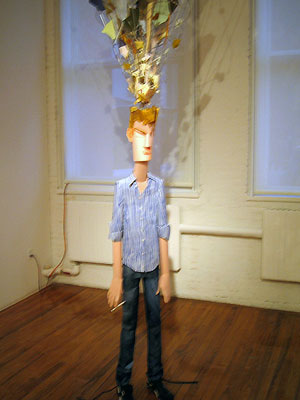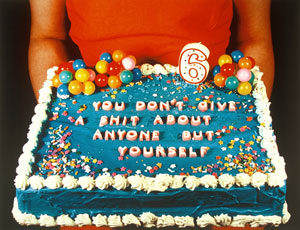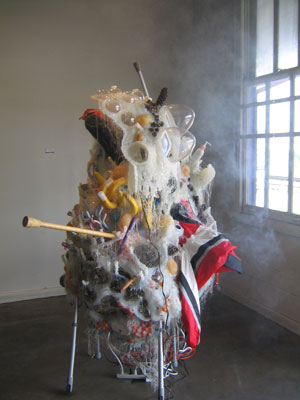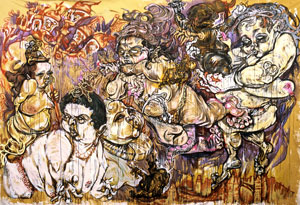Proving the old adage true — everything old is new again — today’s art is once again cycling in on itself by echoing artists such as Marcel Duchamp, Mario Merz and the recent work of Thomas Hirschhorn.

Ryan Johnson... Brainstorm... 2005... Paper, acrylic paint, color aid paper, matt medium, aluminum, and epoxy
Proving the old adage true — everything old is new again — today’s art is once again cycling in on itself by echoing artists such as Marcel Duchamp, Mario Merz and the recent work of Thomas Hirschhorn. Found objects and common materials such as cardboard, fabric, foil, plastic, tape, fake flowers, hot glue, and trash are the prominent materials in this genre of lo-fi, aesthetically-driven art, as is quotidian subject matter. While not a new approach, the process of incorporating mundane and unremarkable objects is enjoying a renaissance of sorts, pushing the boundaries of combination and invention to create works that become both familiar and accessible.
As evidenced in the panoply of New York’s art fairs and exhibitions in early March, works referencing the commonplace in material and subject matter are flourishing throughout all aspects of the art world. At Scope, the Armory Show, and the Greater New York 2005 exhibition at P.S. 1 Contemporary Art, every turn of the head was greeted by young artists’ works in this vein, such as Ryan Johnson’s Rambling Man, a life-sized cut paper man, Jason Fox’s Peaceful Warrior, comprised of a white wig and wood branches that formed a huge walking dandelion, Tobias Putrih’s Macula Series L & A, amorphous sculptures of corrugated cardboard, and Rina Banerjee's Tropical Fatigue and the Seven Wanderings: You Are Not Like Me, a large-scale work incorporating suitcases, umbrella skeletons, fabricated leaves, and eggs that suggested an innovative plant or weed.
Works like these have their antecedent in the ready-mades of Duchamp, the Surrealist and Dada movements and the Arte Povera Movement of 1962-72, which glorified and explored the essential power of materials, both old and of-the-time, manmade and unrefined, as a reaction to Italian post-war economic and political instability. The phenomena of today’s lo-fi works seem to have similarly rooted motivations. It may be interpreted as a reaction to what is happening in this turbulent time as it assimilates an almost childlike affectation while nostalgically romanticizing an era based in purity and innocence — in a sense becoming anti-art. Concurrently, the work provides a counterbalance to the clean, precise digital art of the 1990’s, while utilizing the quickness and accessibility associated with both installation and performance-based art. Though it primarily manifests itself as sculptural objects, the lo-fi aesthetic is also apparent in other media: drawing, painting, and video animation, all of which are greatly influenced by both historical comics as well as the surge of graffiti-inspired art that was the locus of the 1980s East Village New York art scene.
Lo-fi works also have a renewed and redefined relationship to craft, by combining dissimilar and hybrid materials with media-based art, popular culture and consumer production. The compound result generally focuses more on formal explorations into the intersection of the divergent materials then on conceptual thought (making it an easy, and often justified, target of derision). But this attention to craft is what distinguishes the good from the bad, the thought-provoking works from one-liners, although in many works a sloppy aesthetic is an essential element to the piece.
Art operating in this manner is abundant in Texas. Recent exhibitions at galleries that lean toward showing this type of work, Commerce Street Art Warehouse and Art Dust in Houston, Gray Matters Gallery and Plush in Dallas, Fresh Up Club in Austin, and The Bower in San Antonio, highlight the trend to encompass the commonplace. Some of the most interesting Texas artists adopting the lo-fi aesthetic include Richie Budd, Trenton Doyle Hancock, Peat Duggins,





